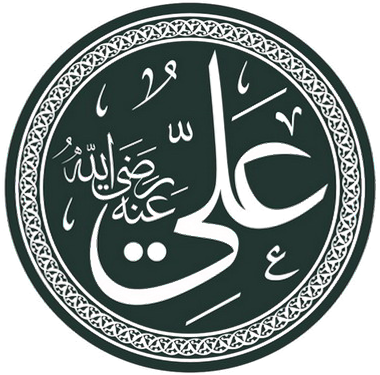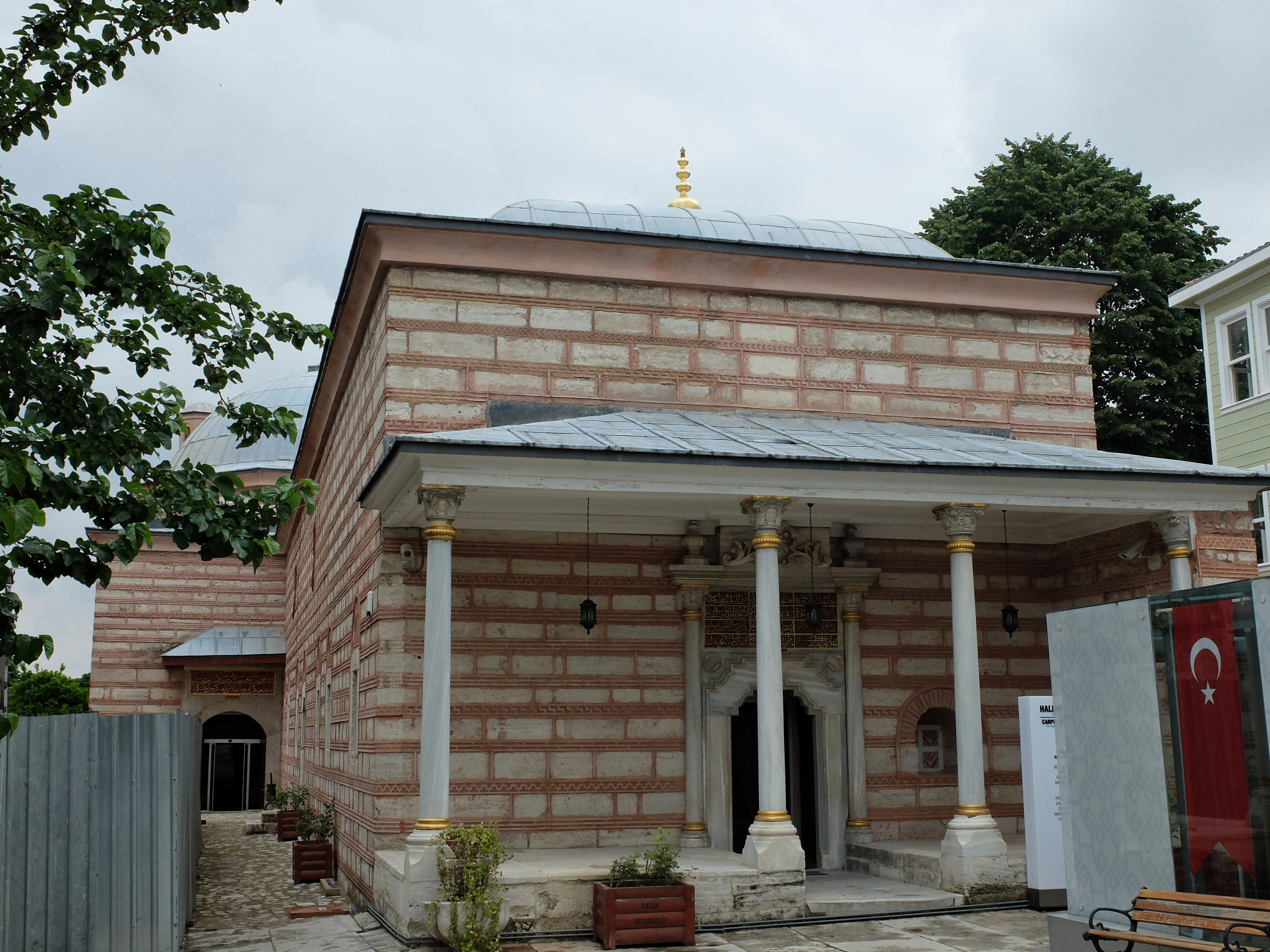|
Demir Baba Teke
Demir Baba Teke ( bg, Демир баба теке; tr, Demir Baba Tekkesi) is a 16th-century Alevi mausoleum (''türbe'') near the village of Sveshtari, Isperih municipality, Razgrad Province in northeastern Bulgaria. As part of the Sboryanovo historical and archaeological reserve, Demir Baba Teke is one of the 100 Tourist Sites of Bulgaria. The mausoleum is thought to be the resting place of Demir Baba, a 16th-century Alevi saint. The tomb itself is a heptagonal building constructed out of local sandstone. It has a lower rectangular antechamber and is covered by a hemispherical dome in height. Demir Baba's grave lies in the middle of the heptagonal inner premises. Constructed out of bricks and wood, the sarcophagus is in length and is positioned with the saint's head pointing southwest. The sarcophagus is usually entirely covered by gifts and is only rarely displayed to Alevi pilgrims. The mausoleum is thought to have been constructed in the 16th century on what was pr ... [...More Info...] [...Related Items...] OR: [Wikipedia] [Google] [Baidu] |
Thracians
The Thracians (; grc, Θρᾷκες ''Thrāikes''; la, Thraci) were an Indo-European languages, Indo-European speaking people who inhabited large parts of Eastern Europe, Eastern and Southeast Europe, Southeastern Europe in ancient history.. "The Thracians were an Indo-European people who occupied the area between northern Greece, southern Russia, and north-western Turkey. They shared the same language and culture... There may have been as many as a million Thracians, diveded among up to 40 tribes." Thracians resided mainly in the Balkans (mostly Present (time), modern day Bulgaria, Turkey and Greece) but were also located in Anatolia, Anatolia (Asia Minor) and other locations in Eastern Europe. The exact origin of Thracians is unknown, but it is believed that proto-Thracians descended from a purported mixture of Proto-Indo-Europeans and Early European Farmers, arriving from the rest of Asia and Africa through the Asia Minor (Anatolia). The proto-Thracian culture developed int ... [...More Info...] [...Related Items...] OR: [Wikipedia] [Google] [Baidu] |
Religious Buildings And Structures In Bulgaria
Religion is usually defined as a social-cultural system of designated behaviors and practices, morals, beliefs, worldviews, texts, sanctified places, prophecies, ethics, or organizations, that generally relates humanity to supernatural, transcendental, and spiritual elements; however, there is no scholarly consensus over what precisely constitutes a religion. Different religions may or may not contain various elements ranging from the divine, sacred things, faith,Tillich, P. (1957) ''Dynamics of faith''. Harper Perennial; (p. 1). a supernatural being or supernatural beings or "some sort of ultimacy and transcendence that will provide norms and power for the rest of life". Religious practices may include rituals, sermons, commemoration or veneration (of deities or saints), sacrifices, festivals, feasts, trances, initiations, funerary services, matrimonial services, meditation, prayer, music, art, dance, public service, or other aspects of human culture. Religions have sa ... [...More Info...] [...Related Items...] OR: [Wikipedia] [Google] [Baidu] |
Alevism
Alevism or Anatolian Alevism (; tr, Alevilik, ''Anadolu Aleviliği'' or ''Kızılbaşlık''; ; az, Ələvilik) is a local Islamic tradition, whose adherents follow the mystical Alevi Islamic ( ''bāṭenī'') teachings of Haji Bektash Veli, who is supposed to have taught the teachings of Ali and the Twelve Imams. Differing from Sunnism and other Twelver Shia, Alevis have no binding religious dogmas, and teachings are passed on by a spiritual leader. They acknowledge the six articles of faith of Islam, but may differ regarding their interpretation. Adherents of Alevism are found primarily in Turkey and estimates of the percentage of Turkey's population that are Alevi include between 4% and 15%. Etymology "Alevi" () is generally explained as referring to Ali, the cousin and son-in-law of Muhammad. The name represents a Turkish form of the word ''‘Alawi'' ( ar, علوي) "of or pertaining to Ali". A minority viewpoint is that of the Ishikists, who assert, "Alevi" was de ... [...More Info...] [...Related Items...] OR: [Wikipedia] [Google] [Baidu] |
Buildings And Structures Completed In The 16th Century
A building, or edifice, is an enclosed structure with a roof and walls standing more or less permanently in one place, such as a house or factory (although there's also portable buildings). Buildings come in a variety of sizes, shapes, and functions, and have been adapted throughout history for a wide number of factors, from building materials available, to weather conditions, land prices, ground conditions, specific uses, prestige, and aesthetic reasons. To better understand the term ''building'' compare the list of nonbuilding structures. Buildings serve several societal needs – primarily as shelter from weather, security, living space, privacy, to store belongings, and to comfortably live and work. A building as a shelter represents a physical division of the human habitat (a place of comfort and safety) and the ''outside'' (a place that at times may be harsh and harmful). Ever since the first cave paintings, buildings have also become objects or canvasses of much artistic ... [...More Info...] [...Related Items...] OR: [Wikipedia] [Google] [Baidu] |
Felix Philipp Kanitz
Felix Philipp Kanitz ( he, פליקס פיליפ קאניץ. 2 August 1829 – 8 January 1904) was an Austro-Hungarian naturalist, geographer, ethnographer, archaeologist, painter and author of travel notes, of Jewish heritage. Biography Kanitz was born in Pest to a rich Jewish family and enrolled in art in the University of Vienna in 1846, at the age of seventeen.He travelled extensively after 1850, visiting Germany, France, Belgium and Italy. He settled in Vienna in 1856 and undertook a journey to Dalmatia in the Balkans in 1858, which marked the beginning of his thorough research of the South Slavs. Apart from Dalmatia, he also visited Herzegovina, Bosnia, Kingdom of Montenegro, Serbia and Bulgaria. He worked on the topic until 1889, the knowledge he gathered being evaluated as particularly important for the period. A good painter and drawer, Kanitz was also the author of a number of black and white drawings related to the life in the Balkans. Born a Jew, he later convert ... [...More Info...] [...Related Items...] OR: [Wikipedia] [Google] [Baidu] |
Fresco
Fresco (plural ''frescos'' or ''frescoes'') is a technique of mural painting executed upon freshly laid ("wet") lime plaster. Water is used as the vehicle for the dry-powder pigment to merge with the plaster, and with the setting of the plaster, the painting becomes an integral part of the wall. The word ''fresco'' ( it, affresco) is derived from the Italian adjective ''fresco'' meaning "fresh", and may thus be contrasted with fresco-secco or secco mural painting techniques, which are applied to dried plaster, to supplement painting in fresco. The fresco technique has been employed since antiquity and is closely associated with Italian Renaissance painting. The word ''fresco'' is commonly and inaccurately used in English to refer to any wall painting regardless of the plaster technology or binding medium. This, in part, contributes to a misconception that the most geographically and temporally common wall painting technology was the painting into wet lime plaster. Even in appar ... [...More Info...] [...Related Items...] OR: [Wikipedia] [Google] [Baidu] |
People's Republic Of Bulgaria
The People's Republic of Bulgaria (PRB; bg, Народна Република България (НРБ), ''Narodna Republika Balgariya, NRB'') was the official name of Bulgaria, when it was a socialist republic from 1946 to 1990, ruled by the Bulgarian Communist Party (BCP) together with its coalition partner, the Bulgarian Agrarian People's Union. Bulgaria was closely allied with the Soviet Union during the Cold War, being part of Comecon as well as a member of the Warsaw Pact. The Bulgarian resistance movement during World War II deposed the Kingdom of Bulgaria administration in the Bulgarian coup d'état of 1944 which ended the country's alliance with the Axis powers and led to the People's Republic in 1946. The BCP modelled its policies after those of the Soviet Union, transforming the country over the course of a decade from an agrarian peasant society into an industrialized socialist society. In the mid-1950s and after the death of Stalin, the party's hardliners lost in ... [...More Info...] [...Related Items...] OR: [Wikipedia] [Google] [Baidu] |
Imaret
Imaret, sometimes also known as a ''darüzziyafe'', is one of a few names used to identify the public soup kitchens built throughout the Ottoman Empire from the 14th to the 19th centuries. These public kitchens were often part of a larger complex known as a ''külliye'', which could include hospices, mosques, caravanserais and colleges. The imarets gave out food that was free of charge to specific types of people and unfortunate individuals. Imarets were not invented by the Ottomans but developed under them as highly structured groups of buildings. Nonetheless, imarets indicate an appreciation of Muslim religious teachings about charity found in the Qur'an. History A ''Waqf'' is an "Islamic trust" that had important associations to the imaret within the Ottoman Empire. The ''Waqf'' helped the Sultan to provide essential services to citizens. It dealt with the operation and finances of institutions such as the soup kitchens and hospitals. Doğan Kuban notes that in early Ottoman ... [...More Info...] [...Related Items...] OR: [Wikipedia] [Google] [Baidu] |
Mosque
A mosque (; from ar, مَسْجِد, masjid, ; literally "place of ritual prostration"), also called masjid, is a place of prayer for Muslims. Mosques are usually covered buildings, but can be any place where prayers ( sujud) are performed, including outdoor courtyards. The first mosques were simple places of prayer for Muslims, and may have been open spaces rather than buildings. In the first stage of Islamic architecture, 650-750 CE, early mosques comprised open and closed covered spaces enclosed by walls, often with minarets from which calls to prayer were issued. Mosque buildings typically contain an ornamental niche ('' mihrab'') set into the wall that indicates the direction of Mecca (''qiblah''), Wudu, ablution facilities. The pulpit (''minbar''), from which the Friday (jumu'ah) sermon (''khutba'') is delivered, was in earlier times characteristic of the central city mosque, but has since become common in smaller mosques. Mosques typically have Islam and gender se ... [...More Info...] [...Related Items...] OR: [Wikipedia] [Google] [Baidu] |
Khanqah
A khanqah ( fa, خانقاه) or khangah ( fa, خانگاه; also transliterated as ''khankah'', ''khaneqa'', ''khanegah'' or ''khaneqah''; also Arabized ''hanegah'', ''hanikah'', ''hanekah'', ''khankan''), also known as a ribat (), is a building designed specifically for gatherings of a Sufi brotherhood or ''tariqa'' and is a place for spiritual practice and religious education. The khanqah is typically a large structure with a central hall and smaller rooms on either side. Traditionally, the kahnqah was state-sponsored housing for Sufis. Their primary function is to provide them with a space to practice social lives of asceticism. Buildings intended for public services, such as hospitals, kitchens, and lodging, are often attached to them. Khanqahs were funded by Ayyubid sultans in Syria, Zangid sultans in Egypt, and Delhi sultans in India in return for Sufi support of their regimes. Etymology The word khanqah is likely either Turkish or Persian in origin. In the Arab world, ... [...More Info...] [...Related Items...] OR: [Wikipedia] [Google] [Baidu] |
Sarcophagus
A sarcophagus (plural sarcophagi or sarcophaguses) is a box-like funeral receptacle for a corpse, most commonly carved in stone, and usually displayed above ground, though it may also be buried. The word ''sarcophagus'' comes from the Greek σάρξ ' meaning "flesh", and φαγεῖν ' meaning "to eat"; hence ''sarcophagus'' means "flesh-eating", from the phrase ''lithos sarkophagos'' ( λίθος σαρκοφάγος), "flesh-eating stone". The word also came to refer to a particular kind of limestone that was thought to rapidly facilitate the decomposition of the flesh of corpses contained within it due to the chemical properties of the limestone itself. History of the sarcophagus Sarcophagi were most often designed to remain above ground. The earliest stone sarcophagi were used by Egyptian pharaohs of the 3rd dynasty, which reigned from about 2686 to 2613 B.C. The Hagia Triada sarcophagus is a stone sarcophagus elaborately painted in fresco; one style of later A ... [...More Info...] [...Related Items...] OR: [Wikipedia] [Google] [Baidu] |




.jpg)


